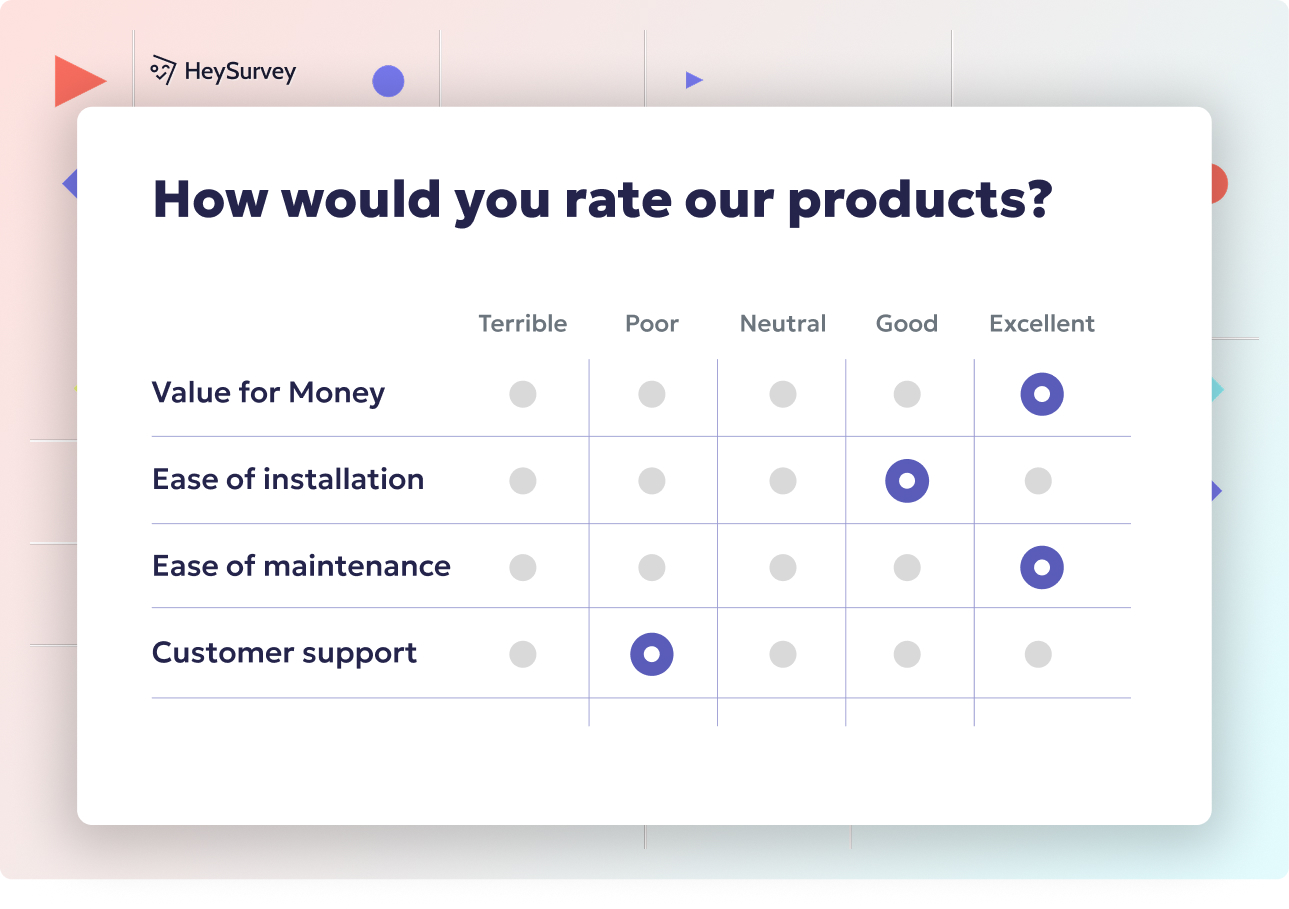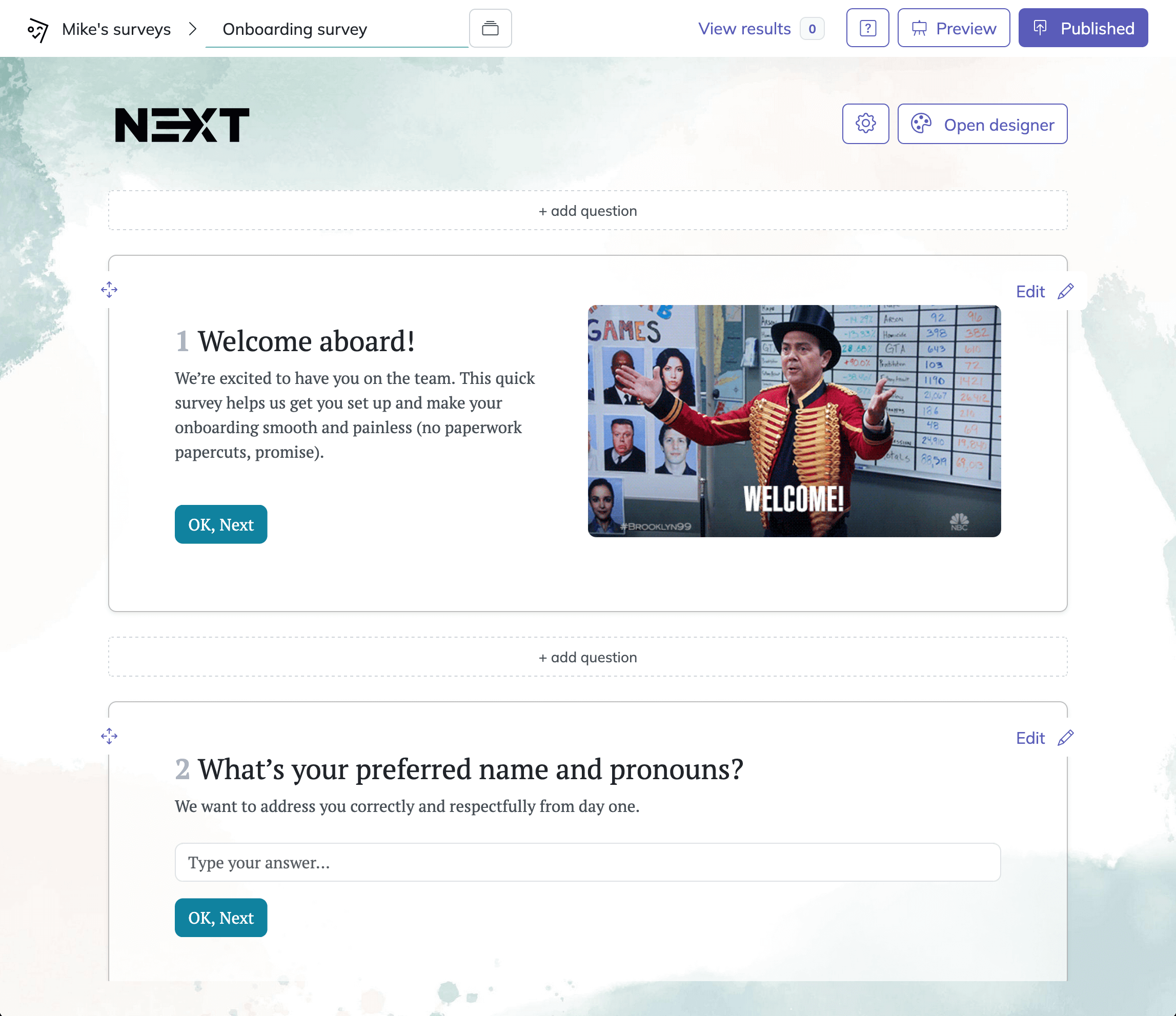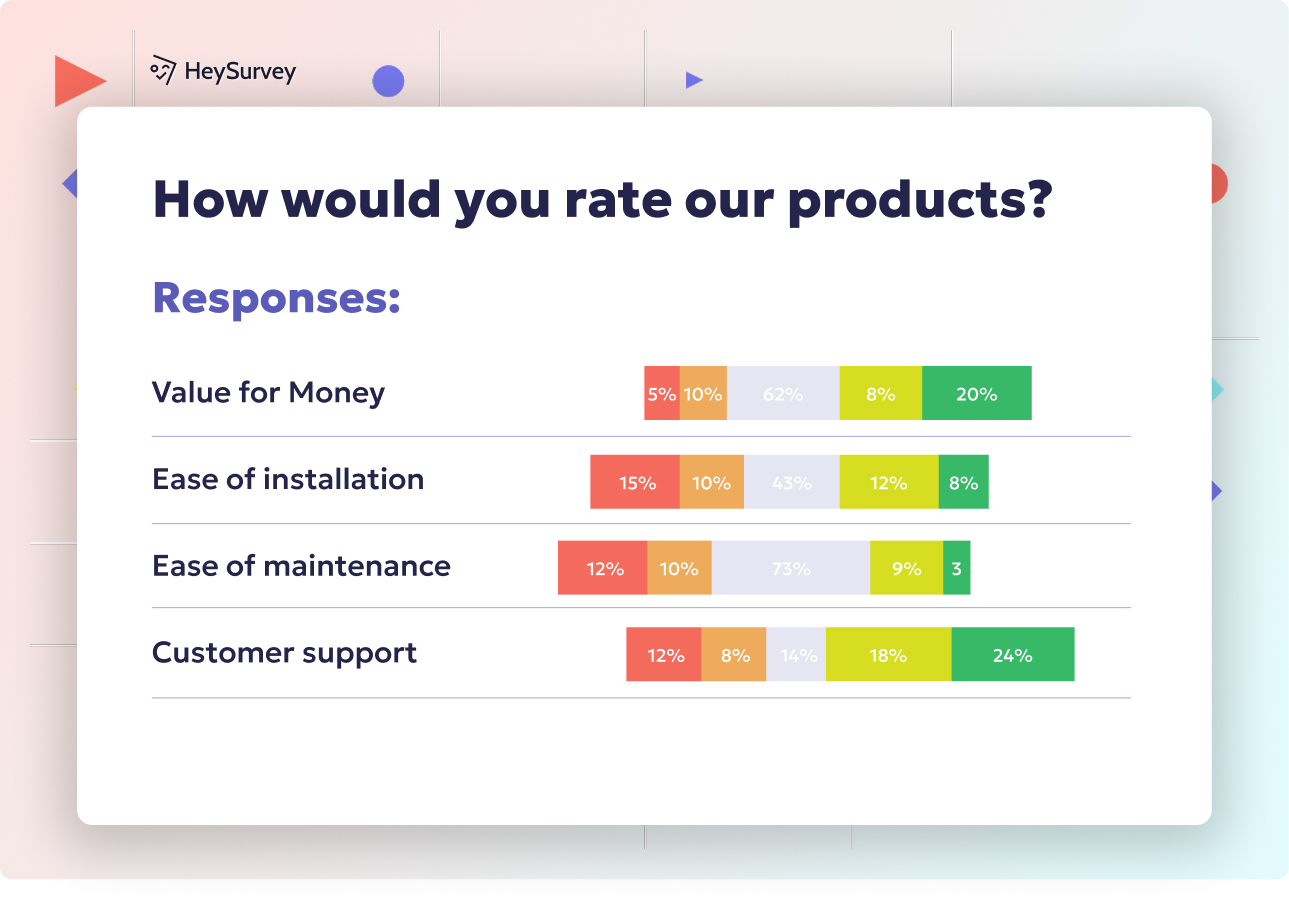31 Categorical Survey Questions Examples for Effective Research
Explore 28 categorical survey questions examples with detailed types and sample questions for effective market research and audience insights.
Categorical survey questions shape the quality of insights you gather, unlocking respondent perspectives that numbers alone can’t always explain. Whether you’re a market researcher, UX pro, or just love a neat pie chart, you need to know the types of categorical questions that drive clean, insightful data. In this article, you’ll find clear definitions of categorical question types—both nominal and ordinal, plus detailed examples for everything from simple yes-no queries to nuanced semantic differentials. Explore the best categorical question types and see real, ready-to-use categorical survey question examples for any research objective.
Dichotomous (Yes/No) Questions
What Are Dichotomous Questions?
Dichotomous questions are the trusty sidekick of surveys—they only offer two mutually exclusive answer options. Typically, respondents answer with a simple Yes or No, leaving little room for ambiguity. These questions provide results that are easy to analyze and ideal for filtering large audiences quickly.
Why & When to Use Dichotomous Questions
You’ll want dichotomous survey questions when you need fast, clear-cut decisions or to segment your sample before diving into more granular items. If you’re gauging basic sentiment, confirming eligibility, or checking for experience with a product or service, a yes-no structure keeps everything crisp.
Dichotomous questions are perfect for:
- Screening participants for eligibility
- Simple satisfaction or incident checks
- Quick audience segmentation before longer surveys
- Polls where speed and clarity matter
Because of their clarity, they minimize confusion for respondents, but don't expect subtlety—they’re meant for binary choice, not shades of gray.
5 Dichotomous Survey Question Examples
Do you currently own a smartphone? Yes/No
Have you visited our website in the last 30 days? Yes/No
Would you recommend our product to a friend? Yes/No
Are you over 18 years old? Yes/No
Did our support team resolve your issue today? Yes/No
Each of these dichotomous survey question examples demonstrates the quick, decisive insight you gain—making them superb for screening, eligibility, or basic measurements before diving deeper.
Research indicates that using scaled response formats in surveys can significantly increase disclosure rates compared to dichotomous (yes/no) questions. (pmc.ncbi.nlm.nih.gov)

How to Create Your Categorical Survey with HeySurvey in 3 Easy Steps
Step 1: Create a New Survey
Kick off your survey adventure by logging into HeySurvey or simply opening the site as a guest. Click Create Survey and choose either a ready-made template (perfect for categorical questions) or start from a blank sheet if you want full control.
Name your survey inside the Survey Editor to keep things nice and tidy, then you’re ready to start adding those questions.
Step 2: Add Your Questions
Hit the Add Question button at the top or between existing questions to insert your categorical questions.
Pick from multiple types like:
- Choice questions for single-select and multi-select options
- Scale questions for Likert or rating scales
- Ranking for ordering preferences
- Text or Dropdown for demographics
Customize each question by typing your prompt, setting answer choices, and toggling options like “Other (please specify)” when needed. You can reorder, duplicate, or add images, and mark questions as required to ensure respondents don’t skip vital info.
Step 3: Preview & Publish Your Survey
After polishing your questions and design, click Preview to see how your survey looks on desktop and mobile. Make tweaks in real-time if needed using the Designer Sidebar.
When everything feels just right, Publish it! You’ll get a shareable link to send out or embed on your website. Just remember that publishing and collecting responses requires creating a free account.
Bonus Steps: Customize Branding, Settings & Branching
Apply Your Branding
Upload your logo and adjust fonts, colors, and backgrounds using the Designer Sidebar for a survey that looks unmistakably yours. Customize question card styles and add animations to keep respondents engaged.
Define Survey Settings
Set your survey’s start and end dates, limit the number of responses, add a redirect URL for completion, or allow respondents to view summarized results. These settings are found under the Settings Panel and help you tailor the experience precisely.
Add Branching Logic
Want to skip or show different questions based on answers? Use HeySurvey’s Branching feature to create dynamic question paths that respond to participant choices. This keeps surveys relevant, short, and personalized.
Now that you know how easy it is to create categorical surveys in HeySurvey, go ahead and explore the template below to jumpstart your next research project!
Single-Select Multiple-Choice (Nominal)
What Are Single-Select Categorical Questions?
Single-select (or single choice) questions let respondents pick one answer from a predefined list. There’s no right or wrong—every category has equal value, but only one can be chosen. These are classic examples of nominal questions, perfect for mutually exclusive segmentation.
Why & When to Use Single-Select Questions
If you need to segment respondents by preference, behavior, or affiliation, single-selects deliver. They force a decisive choice, making them wonderful for market research, persona building, or basic demographic splits. There’s no possibility of overlap, so results are easy to chart and analyze.
Use single-select nominal questions for:
- Defining market or audience segments
- Understanding “most” child categories, like favorite brand or most-used device
- Forcing clear tradeoffs or priorities
- Ensuring data stays tidy (one respondent, one bucket)
Single-selects are a mainstay for surveys because they create clear data points and keep comparisons straightforward.
5 Single Choice Categorical Question Examples
Which social media platform do you use most often? (Facebook, Instagram, X, LinkedIn)
What is your primary mode of commuting? (Car, Bus, Train, Bike, Walk)
What operating system does your main computer run? (Windows, macOS, Linux, ChromeOS)
Which newsletter format do you prefer? (HTML, Plain Text)
What type of pet do you own? (Dog, Cat, Bird, None)
Each single choice categorical question is structured to deliver unambiguous, actionable segmentation, removing the guesswork from your demographic or behavioral splits.
Single-select categorical questions, by limiting respondents to one choice, simplify data analysis and enhance clarity in survey results. (smartsurvey.com)
Multi-Select (Checkbox) Questions (Nominal)
What Are Multi-Select Categorical (Checkbox) Questions?
Multi-select or checkbox questions are the enthusiastic multitaskers of the survey world—they let respondents choose all options that apply. These are prime examples of nominal categorical questions where overlap is encouraged, not avoided. They’re ideal for capturing the diversity of actions, preferences, and experiences.
Why & When to Use Checkbox Questions
Use multi-select checkboxes when you want to explore the breadth of behaviors or preferences. Rather than squeezing respondents into one bucket, allow them to express a fuller, more authentic range of activities or likes. Checkbox survey questions reveal the complexity of real choices.
Checkboxes shine when you need to:
- Discover all the factors influencing purchase decisions
- Map out all features a user engages with
- Capture every channel or device a respondent uses
- Understand the spread in tastes, such as in food or entertainment
They’re especially useful for tech product surveys, lifestyle studies, or any context where overlap is the norm, not the exception.
5 Checkbox Survey Examples
Which features influenced your purchase? (Price, Brand, Reviews, Warranty, Design)
What cuisines do you enjoy eating out? (Italian, Mexican, Thai, Japanese, Indian)
Which newsletters do you currently subscribe to? (Marketing, Finance, Tech, Health)
What devices do you use to stream video? (Smart TV, Laptop, Tablet, Smartphone)
Which of the following sports do you regularly watch? (Football, Basketball, Soccer, Tennis, None)
Every checkbox survey example in this list helps you map the rich diversity of respondent experience and keep your analysis grounded in real complexity.
Likert Scale Questions (Ordinal)
What Are Likert Categorical Questions?
Likert scale questions use a range—usually from “strongly disagree” to “strongly agree”—to measure degrees of opinion, agreement, or frequency. They’re a classic form of ordinal categorical question, capturing a spectrum of attitude, not just a binary result. Likert questions support easy quantification while keeping answers categorical in essence.
Why & When to Use Likert Scale Questions
Whenever you want to measure intensity or direction of feelings, satisfaction, or agreement, Likert scales excel. They help break down opinions into measurable units, making subtle insights visible and trackable over time. Likert questions are mainstays for user feedback, customer satisfaction, and employee engagement surveys.
Apply Likert categorical questions:
- To evaluate satisfaction with features, services, or experiences
- For attitude and opinion measurement about brands, usability, or policy
- Tracking trends over multiple touchpoints (before/after, year-to-year, etc.)
- To gauge likelihood or perceived performance
Because they’re ordered, Likert responses show progression (or regression) in attitudes, providing much-needed depth beyond yes/no or multiple choice.
5 Likert Categorical Question Examples
I find the mobile app easy to navigate. (1–5 where 1=Strongly Disagree, 5=Strongly Agree)
Customer support responded promptly. (1–5 agreement)
I intend to renew my subscription. (1–5 likelihood)
The product’s price is reasonable. (1–5 agreement)
The checkout process was convenient. (1–5 agreement)
These Likert categorical question examples let you extract nuance from attitudes and behaviors—ideal when you want a bit more flavor than simple agree/disagree.
Research indicates that using more than seven response options in Likert scale questions can lead to lower data quality, as respondents may choose answers randomly when faced with too many choices. (surveylegend.com)
Rating Scale Questions (Ordinal)
What Are Rating Scale Questions?
Rating scale questions invite respondents to express the intensity of their opinion on a numeric or star scale—commonly 1–5 or 0–10. These are ordinal categorical survey questions because they reflect ordered levels but are not true continuous numbers. This type is famous for measuring likelihood and satisfaction.
Why & When to Use Rating Scale Questions
Whenever you want a measure of “how much” or “how well”—rather than just yes/no or what kind—you’ll call for a rating scale. They’re perfect for net promoter score (NPS), customer satisfaction (CSAT), and performance evaluations. Ratings transform fuzzy opinions into scalable data points.
Choose rating scales to:
- Capture intensity of opinions (not just direction)
- Draw easy graphs and dashboards for NPS and star reviews
- Compare between groups or over time with a single, digestible score
- Benchmark products, services, or employee factors
Ordinal rating scales democratize deep insights without needing statistical wizardry— respondents simply rate, and you see at a glance how you’re doing.
5 Rating Scale Survey Questions
On a scale of 0–10, how likely are you to recommend our service?
Rate the overall quality of the webinar (1–5 stars).
How satisfied are you with delivery speed? (1–5)
Rate your stress level at work this week (1–10).
How effective was today’s training session? (1–5)
Every example here gives you a quantitative readout of ordinal opinions, which makes it easier to chart progress and identify areas for improvement.
Ranking Questions (Ordinal)
What Are Ranking Questions?
Ranking questions ask respondents to order a list of items by preference or importance—from favorite to least favorite, or most to least critical. These questions are pure ordinal categorical ranking tools, offering insights not just into “what” but “how much more” one thing is valued over another.
Why & When to Use Ranking Survey Questions
Whenever you care about priority or trade-offs—not just selection—ranking questions are the go-to. They reveal what matters most, and what comes last, in the minds of customers, users, or employees. These work wonders for optimizing feature roadmaps, event agendas, or benefit packages.
Ranking survey questions are a match for:
- Prioritizing product features or enhancements
- Understanding which perks or services hold the most value
- Guiding resource allocation or upgrade decisions
- Revealing pain points or passionate favorites within an experience
Since rankings require thoughtful consideration, they often reflect true respondent priorities, providing more strategic data for your next big move.
5 Ranking Survey Questions
Rank these smartphone features by importance.
Order these vacation factors from most to least important.
Prioritize upcoming software features for our roadmap.
Rank the following subscription perks you value most.
Arrange these payment methods in order of preference.
These ranking categorical question examples show you both preference and intensity, supplying more actionable guidance than flat-choice questions.
Semantic Differential (Bi-Polar) Questions
What Are Semantic Differential Questions?
Semantic differential questions use opposing adjective pairs (like “Reliable” vs “Unreliable”) set across a 7-point (or similar) bipolar scale. Respondents rate their position between two extremes, revealing how they really feel about a brand, product, or experience. These aren’t your everyday checklist—they capture the nuances of perception.
Why & When to Use Semantic Differential Scales
Turn to semantic differential questions when brand personality, emotional feel, or subtle experience differences are on the line. They’re great for branding and UX projects—pinpointing whether a product feels “old-fashioned” or “cutting-edge,” “boring” or “exciting.”
Use semantic differential scales for:
- Mapping perceived brand image or product positioning
- Curating experience design, tone, or style evolution
- Isolating how changes shift public perception
- Visualizing the emotional impact of updates or campaigns
These scales expose the “gray areas” of opinion—the rich middle ground that binary questions miss.
5 Semantic Differential Examples
Unreliable ___ ___ ___ ___ ___ ___ ___ Reliable
Old-fashioned ___ ___ ___ ___ ___ ___ ___ Modern
Difficult to use ___ ___ ___ ___ ___ ___ ___ Easy to use
Boring ___ ___ ___ ___ ___ ___ ___ Exciting
Low value ___ ___ ___ ___ ___ ___ ___ High value
Each semantic differential example enables you to surface the emotion and nuance behind preferences, arming you with insights that go way beyond facts and figures.
Demographic Categorical Questions
What Are Demographic Categorical Questions?
Demographic questions define fixed categories to describe respondents. This includes age ranges, education levels, job sectors, and so on. These are nominal categorical questions—no built-in order but crucial for segmenting and understanding who your respondents are.
Why & When to Use Demographic Survey Questions
Demographic questions are the backbone of audience segmentation. You use these to ensure sample representativeness, find patterns across subgroups, and meet research requirements for diversity or inclusion. Targeted marketing, personnel planning, or governmental reporting all start with good demographic data.
Reasons to include demographic categorical questions:
- Segmenting data for cross-group comparisons
- Qualifying for grants or regulatory compliance
- Tailoring messaging to granular audience segments
- Spotting risky gaps or over-represented groups in a sample
Demographic survey questions don’t just help analysis—they enable it.
5 Demographic Survey Question Examples
What is your age group? (18–24, 25–34, …)
What is your highest level of education? (High school, Bachelor’s, etc.)
Which industry do you work in? (Technology, Healthcare, Finance, Education, Other)
What is your employment status? (Full-time, Part-time, Student, Unemployed)
Which region do you currently reside in? (North America, Europe, Asia-Pacific, etc.)
Each demographic categorical example anchors your data to real-life context, elevating analysis from abstract numbers to rich, actionable understanding.
Best Practices: Dos and Don’ts for Categorical Survey Questions
Dos: Categorical Survey Design Checklist
Creating effective categorical survey questions means following a short, powerful set of design rules. Apply these best practices and your responses will be cleaner, analyses clearer, and respondents much happier.
Do:
- Keep categories mutually exclusive—no overlap, no confusion.
- Use clear, unambiguous labels that everyone understands.
- Always include “Other (please specify)” for edge cases or inclusivity.
- Pilot test your questionnaire to catch unclear or missing options.
- Randomize answer order, where appropriate, to prevent order bias.
Each point here boosts accuracy and reliability, protecting your survey from common pitfalls and misinterpretations.
Don’ts: Mistakes to Avoid
Good survey design isn’t just about adding great questions—it’s about knowing what not to do. Dodge these common errors for cleaner, more trustworthy categorical data.
Don’t:
- Overload any question with too many options—respondents get overwhelmed!
- Mix rating scales with categorical choices in a single question.
- Use overlapping numerical or categorical ranges—this creates analysis chaos.
- Assume all respondents have the same knowledge or reference point.
- Bias your language—avoid loaded or leading wording.
Keeping these “don’ts” in mind ensures your survey remains fair, representative, and straightforward for every respondent.
Quick Reference Checklist
- Keep it simple: clarity first, complexity second.
- Cover all logical answer options (including “Other”).
- Pilot and tweak—feedback is your best friend.
- Use only one scale/range per question.
- Protect against bias by reviewing language and sequence.
If you’re inspired to explore even more insights, consider checking out additional guides on effective survey design and data analysis techniques.
Encouraging thoughtful construction of categorical survey question examples ensures your next survey balances precision, inclusivity, and actionable clarity—no matter your research goals. Apply what you’ve learned here and see your data shine. Happy surveying!
Related Question Design Surveys
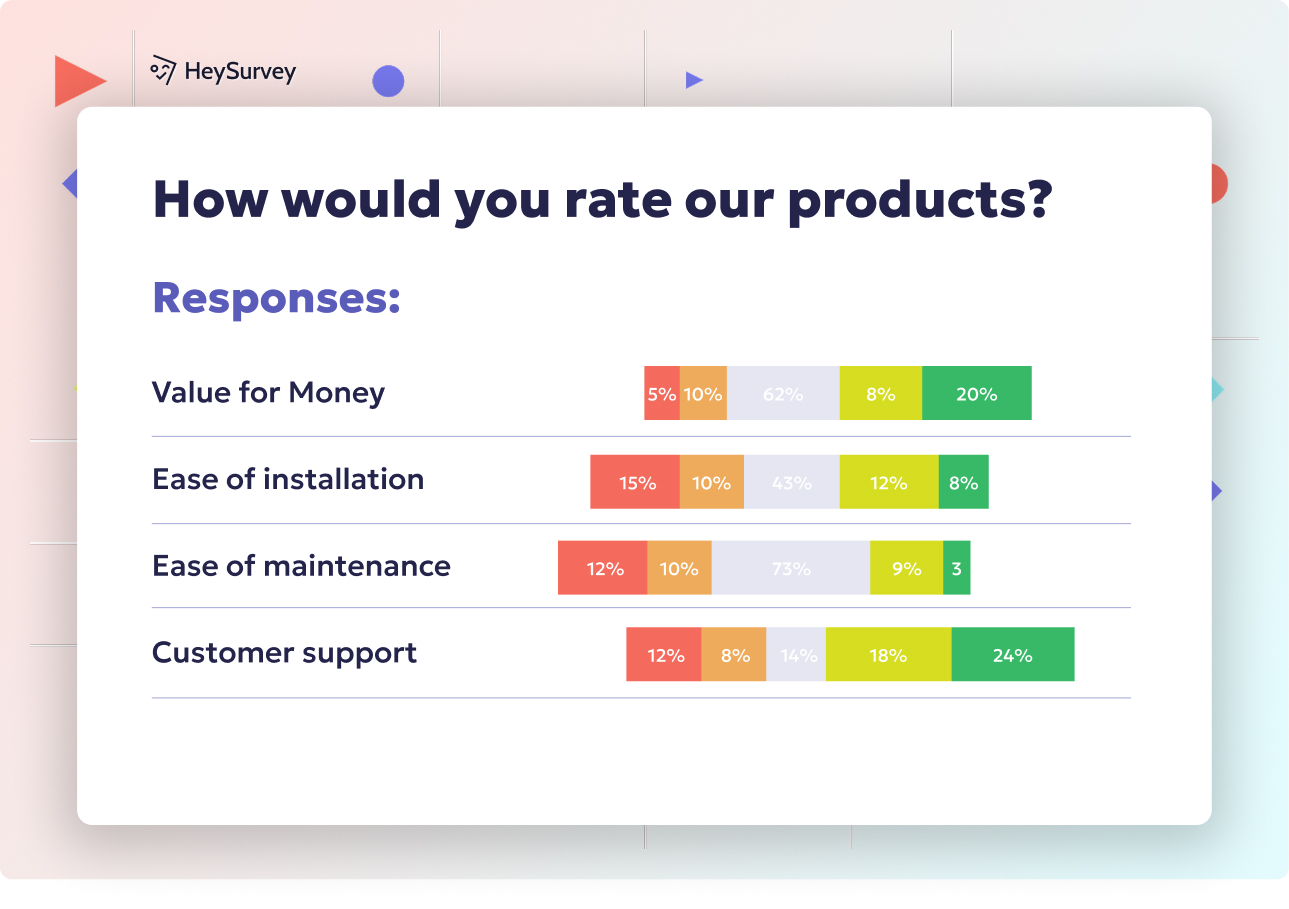
29 Quantitative Survey Research Questions Example for Success
Explore 25+ quantitative survey research questions example with clear explanations and tips for c...

32 Good Survey Question to Boost Your Data Quality
Discover how to craft good survey questions with 30 sample questions across 8 types for better da...
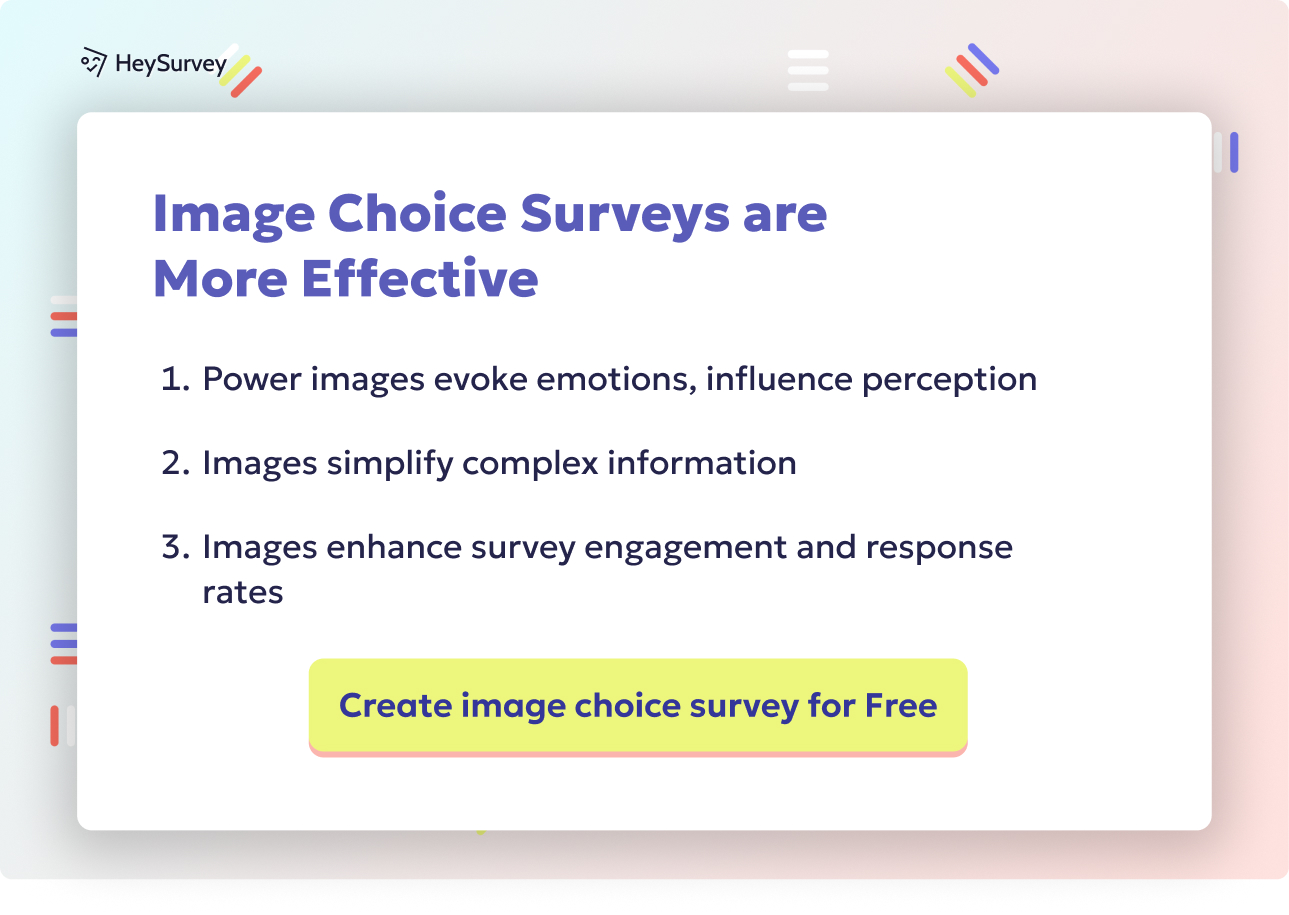
31 Survey Question Mistakes You Need to Avoid Today
Discover 25 common survey questions mistakes with real examples and expert tips to craft clear, u...
